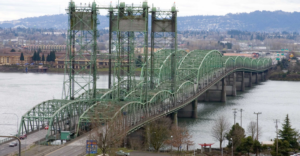 More than ten years ago, the then Republican State Senate killed the effort to replace the I-5 bridge. The process to get to that moment cost millions of dollars and took over 10 years.
More than ten years ago, the then Republican State Senate killed the effort to replace the I-5 bridge. The process to get to that moment cost millions of dollars and took over 10 years.
Four women from both parties restarted the necessary work. I was one of those four women because this bridge is over one hundred years old, and is supported by ancient logs resting on mud in an earthquake subduction zone. Since the failure of the last effort, truck traffic has increased. A mega project like this involves money and commitment from both Washington and Oregon, local governments on both sides of the river and from many federal agencies. Each has complex responsibilities, and each must ask hard questions. Costs, work and traffic patterns and much more changed since the last effort. Additionally, we have committed to ensure that communities affected are considered in a way that was overlooked when the I-5 bridge was built.
If all goes well, construction will commence between 4 and five years from now. Building activities that are less visible will start earlier. The federal government has committed millions of dollars to complete this process and more will be needed depending on some decisions that have yet to be made. Each stage of this process has included review and consideration of all decisions leading up to that point. Legislators like myself agreed that as much work as possible that was still valid from the first effort be incorporated to save money and to avoid having to return dollars to the federal government.
Although tolls are a part of all bridge construction, it has been a long time since this crossing was tolled. Strenuous efforts from both Oregon and Washington leaders are committed to keep tolls as low as possible. When construction begins, both spans will not be removed at the same time but there will be inconvenience to all. The designs being considered as the project moves to a start point will make the entrances and exits on and off the bridge safer. Current accident rates make this bridge on of the least safe in the country. Although travel times for cars won’t be reduced as much as some wish, they will be shorter, and there will be better transit options for commuters. The new bridge will be safer, more resilient in the case of an earthquake, more encouraging to economic development in Vancouver and more. Details and updates on this process can be found at: https://Interstatebridgre.org
